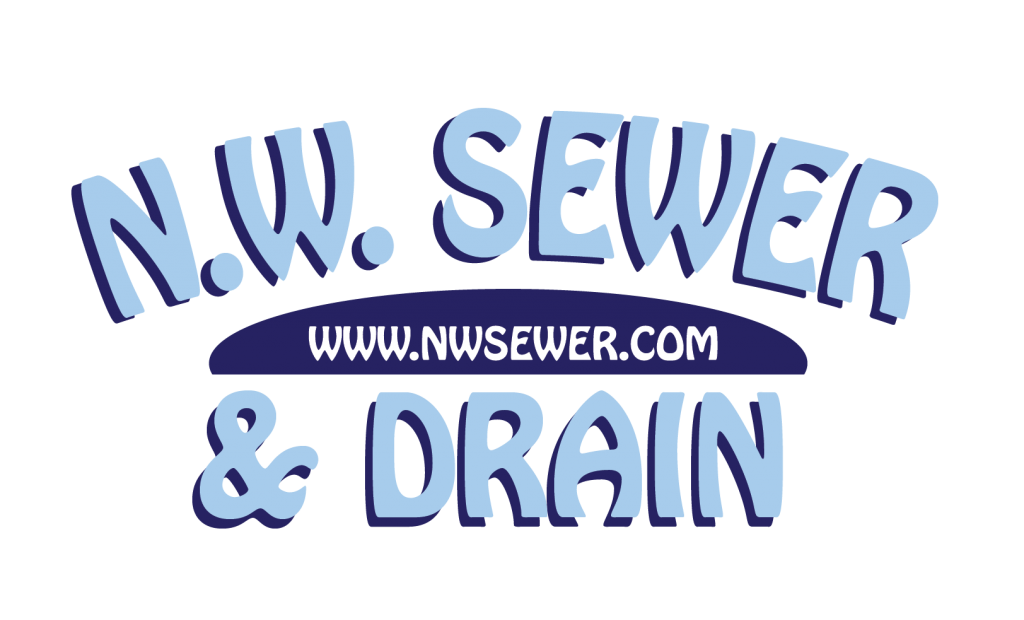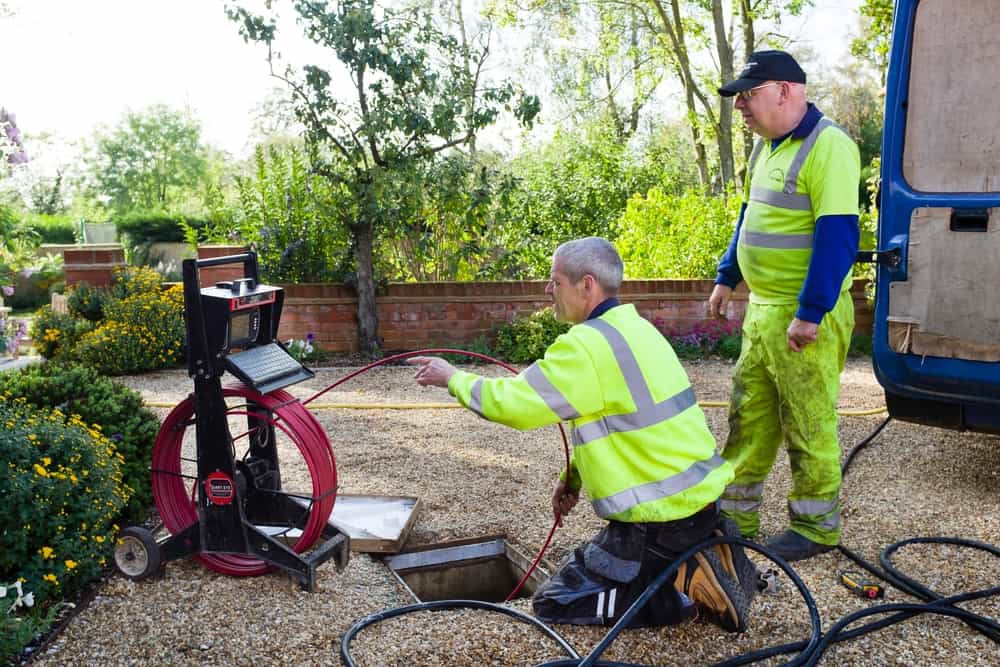No one wants to deal with a sewer repair. It’s costly, time-consuming, and can really ruin your yard. In the past, the only way to fix a sewer line was to dig it up. But thanks to modern technology, there’s now a better way! Plumbing cameras allow technicians to inspect and repair sewer lines without having to dig them up. So if you’re facing possible sewer damages, don’t despair. There’s a new, less intrusive solution that can save you time and money.
How is a Commercial Sewer Camera Inspection Performed?
Certified technicians insert a specialized sewer pipe inspection camera into your sewer line via the clean out. The small fiber optic pipe camera is attached to a long, flexible metal cable. The technician feeds this cable down the sewer line and manipulates it remotely using small motors within the cable.
The camera connects it to a portable, closed-circuit display. Powerful lights on the camera illuminate the interior, so you can see every detail inside the pipe in real-time.
How Do We Perform Sewer Camera Inspection?
We employ commercial camera inspection on the work rather frequently, which might surprise you. Any time it could spare us from destroying a grass or a floor, we advise video drain check.
A surprising variety of home issues can benefit from camera examination. Just a pipe or sewer entrance large enough to spool the camera equipment through is all that is required for it to function. Even ourselves, we can create a momentary gap.
Most fractures, breaks, root damage, and corrosion are visible to technicians using the equipment. To identify and address plumbing issues, camera inspection is a crucial tool. We can address the issue in the most effective manner by being aware of what it is.
For instance, we can clear a clog caused by tree roots using rooting equipment or hydro-jetting cleaners. We utilize a resin-based Cured-In-Place-Pipe to repair leaks and fractures (CIPP). Pipe bursting technology may be required for larger pipe breaks, although it is still significantly less invasive and difficult to use than the alternative. Whatever issue you’re having, camera inspection can help us find it and identify it so we can move accordingly.
If a video inspection is not available, the only way to diagnose problems with your sewer lines is to dig directly down to them. This approach is costly, inefficient, and harmful. Also, a lot of trial and error is required. If we are unaware of the exact location of the problem, we must search until we find it.
With the use of the inspection camera, we can pinpoint the precise position of the problem. Once we get the information, we can fix it with little interruption to your home. As an illustration, we can skip a long pipe section and get straight to the source.
Another advantage of commercial camera inspection is that it can find all of your sewer lines’ issues, not just the most serious ones.
Camera examinations frequently show the root of persistent issues. In the end, camera inspections help you gain a much greater understanding of how well-functioning and healthy your sewer lines are.
Trenchless sewer repair and camera inspection may not be the best options for all repair jobs. Sometimes a more traditional method is necessary due to the location of the pipes or the nature of the issue. Sewer repair is typically considerably simpler and less painful thanks to camera inspection technology. It is also really cool. How frequently do you get to look into your pipes?
Different Types of Sewer Cameras
Crawler Cameras
Strong remotely operated inspection robots called crawler cameras roll through pipes on wheels. They often feature a powerful light source to illuminate the interior of the pipe and are connected through a cable to a surface-level vehicle that provides power and feeds the video back to a vehicle computer for recording.
An operator on the surface steers the crawler’s motion using live vision that is transmitted back to their computer monitor. As a result of their capacity to pan, tilt, and zoom the camera lens as well as adjust for speed and direction, they are known as PTZ cameras (they are also called tractor cameras in some regions). The most popular kind of camera used for pipe network inspections worldwide is the crawler camera.
Fixed Zoom Cameras
In order to record video, fixed zoom or pole cameras are not required to move along the pipe. At sites where there are surface entrance points, they are composed of a fixed high-definition camera head fastened to a pole that is lowered to the pipe’s base.
A movie is made as the camera zooms in and the field of view stretches through the pipe from chainage zero to the end of the pipe or bend using a mix of strong zoom, focus correction, and lighting. They offer a quick and reliable technique to gather a network condition overview by combining optical (20–40x) and digital (10–15x) zoom.
Push rod cameras
While gathering condition footage or making a diagnosis, sewer laterals or house connection branches pose particular difficulties. Because of their narrow width and frequent bends, these smaller lines—which are typically about 150mm in diameter—cannot be traversed by bigger camera equipment.
Push rod cameras are made to function in challenging and constrained spaces. They can be manually inserted, controlled, and have a thin camera head that appears to be a coiled cable on a real surface. The imagery is then sent back to a control device. Skids are occasionally used to maintain the camera head’s stability and central focus.
Inspection Rafts
An inspection raft can be the only option to get imagery from inside a pipe for huge pipes that span considerable distances. They are frequently employed for outfall tunnels where the fish can be released downstream and captured with a hook or net at a site that may be many kilometers down the pipe. Typically, they are built to stand and balance properly.
Drone Cameras
Over the past several years, the industry has witnessed a growth in the usage of drones for pipe inspection due to the rapid improvement of UAV technology. Large pipes with strong flow, where a crawler might not be able to access and where a raft would travel along the pipe too quickly, and lengthier pipe inspections, where equipment weight or cable length is prohibitive, are some circumstances where drones have clear advantages. It will be interesting to observe how this technology advances and whether it eventually replaces other pipe network options.
Manhole / Maintenance Hole Cameras
Today, a range of specialized cameras are available for taking pictures, movies, and 3D scans of the vertical shaft that descends to the benching and pipe channel. In the past, this was accomplished through visible surface or confined space entry inspection, frequent camera use, or with a crawler that was lowered to investigate the main pipe. Modern camera technology has been created expressly to acquire more precise data with considerably greater resolution than ever before.
Speak With Your Local Sewer Specialist
Interested in a commercial sewer camera inspection? You can reach out to us today at N.W. Sewer and Drain. We’re excited to help you sort out any drain issues you might be facing in your home or office building. Ideally, consulting an experienced local sewer and drain cleaning company should be your following line of action if you are experiencing slow-moving drains, foul odor, or clogged drains in your home and need help figuring out what else to do.
At N.W. Sewer & Drain, we have a well-trained and ready-to-move team on standby. We serve the Seattle metropolitan area, including Bellevue, Kirkland, Shoreline, Renton, Lake Forest Park, Mountlake Terrace, Auburn, Everett, Marysville, Mount Vernon, and other surrounding areas.
N.W. Sewer & Drain provides top-notch drain cleaning and sewer repair services in the greater Seattle area, and we’ve been in the business for nearly 20 years. Contact us today at 206-931-7728 to schedule an inspection of your sewer line and pipes.



